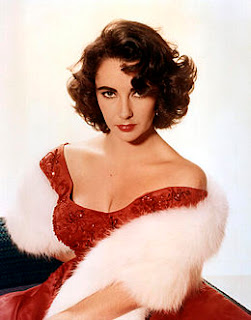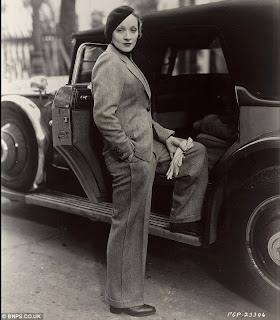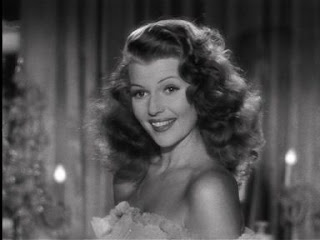 |
| Elizabeth Taylor |
Actress Elizabeth Taylor died of heart failure at the age of 79. In the 1940s, she became one of MGM's leading child stars. By the 1950s she graduated into more mature roles and eventually became a leading sex symbol. Her personal life was often more exciting that her movies.
Actress Susannah York died at the age of 72. She was a gifted actress that appeared in such films as Tom Jones and Superman. She died after a long battle with bone marrow cancer.
Singer Georgia Carroll died at the age of 91. She was the widow of bandleader Kay Kyser, whom she met when she was a vocalist with the band. She also was a model and socialite.
Actor David Nelson died of colon cancer at the age of 74. He was the son of Ozzie and Harriet Nelson who appeared on the Adventures of Ozzie and Harriet, which was a television fixture in the 1950s and 1960s.
Singer Margaret Whiting died at the age of 86. She was one of the most successful girl singers of the 1940s. The daughter of songwriter Richard Whiting, she had numerous record hits such as "A Tree In The Meadow" and "Moonlight In Vermont".
Actress Anne Francis died at the age of 80. She was a huge television actress, who starred in the series Honey West. She also made her mark on such television shows as The Twilight Zone and movies like The Forbidden Planet.
Actress Jane Russell died at the age of 89. Discovered by Howard Hughes, she was one of the leading sex symbols of the 1940s and 1950s. She appeared in such great films as The Outlaw, The Paleface, and Gentlemen Prefer Blondes. She died of resipatory illnesses.
 |
| Betty Garrett |
Actress Betty Garrett died at the age of 91 from an aneurysm. She started out in MGM musicals of the 1940s like Words And Music with Mickey Rooney and On The Town with Gene Kelly and Frank Sinatra. Married to black listed actor Larry Parks, she emerged as a television star in the 1970s on All In The Family and Laverne & Shirley.
Actor Farley Granger died at the age of 84. He was a well respected actor in such films as Strangers On The Train and The Rope. Granger came out as a homosexual after the studio system of Hollywood ended.
Songwriter Hugh Martin died at the age of 96. Probably he most beloved song was Have Yourself A Merry Little Christmas which he wrote for Judy Garland in the MGM musical Meet Me In St. Louis (1944).
Screenwriter Madelyn Pugh died at the age of 90. She was the writer for all three of Lucille Ball's television series - I Love Lucy, The Lucy Show, and Here's Lucy. She was was the producer on the series Alice.
Bandleader Orrin Tucker died at the age of 100. He was one of the last surviving big band leaders of the big band era (1936-1945). His famous hit was Oh Johnny, which he recorded with vocalist Wee Bonnie Baker in 1939.
 |
| Jackie Cooper |
Actor Jackie Cooper died at the age of 88. He was a child star who appeared in classic movies such as The Champ (1931) and the Our Gang series of shorts. He also acted into adulthood, appearing as the newspaper editor in the Superman movie series with Christopher Reeves.
Actress Edith Fellows died at the age of 88. She started out as a child star appearing with Bing Crosby in Pennies From Heaven (1936). She was one of the first child stars to fight for independent rights against her mother.
Actor Peter Falk died at the age of 83, after a long battle with dementia. He was most known for his television role in the Columbo series. However, he was a gifted actor who appeared in such films as A Pocketful Of Miracles, Robin And The Seven Hoods, and The Princess Bride.
Actor James Arness died at the age of 88. He was the brother of actor Peter Graves, who passed away in 2010. Arness was best known from the television series Gunsmoke, which he starred in for twenty years.
Singer Ross Barbour died at the age of 82 of lung cancer. He was one of the founding members of the Four Freshmen. He was also the last original surviving member.
Actor Francesco Quinn died of a heart attack at the age of 48. He was an Italian born American actor in films such as Platoon. Francesco was also the son of actor Anthony Quinn.
Actor Jack Garner died at the age of 84. He was the older brother of James Garner. While Jack did not receive the fame his brother did, he appeared with his brother on television in The Rockford Files, and on the screen in My Fellow Americans (1995).
 |
| Cliff Robertson |
Actor Cliff Robertson died at the age of 88. He won wide acclaim for playing President John F. Kennedy in the film PT 109 (1963), and in later years he played the uncle in the Spiderman movie series.
Actress Mary Fickett died at the age of 83 of dementia. She had a long career on the soap opera All My Children. In films she played Bing Crosby's ex-wife in the tense drama Man On Fire (1957).
Silent screen actress Barbara Kent died at the age of 103. She was one of the last adult actresses in silent films. She left movies in 1935 and refused to give interviews later in life.
Actress and author Judy Lewis died at the age of 76. She acted on television on the soap opera General Hospital. Judy also was the secret love child of Loretta Young and Clark Gable. Young kept the secret of who her father was for years. Judy later wrote a book about her life which exposed the truth.
Musician Tony Martin Jr died at the age of 60. He was the only child of dancer Cyd Charisse and singer Tony Martin. Tony Jr had been in increasing poor health due to a car accident. His mother Cyd Charisse died in 2008.
Actor Harry Morgan died at the age of 96. He was a legendary television actor whose career spanned decades. Morgan was best known for his television roles on Dragnet and Mash, but he also appeared on radio during its golden age and movies as well.
Singer Russ Carlyle died at the age of 96. He never became a famous vocalist like other band singers of the day, but he was a dependable vocalist who sang with the Blue Barron Orchestra from 1936 to 1941.
 |
| Dolores Hope (with Bob Hope) |
Singer Dolores Hope died at the age of 102. She was the widow of Bob Hope. They met while she was a young vocalist and were married from 1934 until Bob's death in 2003. Dolores resumed her singing career in the 1980s and 1990s.
Child star Sybil Jason died at the age of 84. She was a child actress in the early days of the talkies and appeared alongside some of the greats like: Kay Francis in I Found Stella Parish (1935), Al Jolson in The Singing Kid (1936), and Pat O'Brien and Humphrey Bogart in The Great O'Malley (1937).
Author Arthur Marx died at the age of 89. He was the son of Groucho Marx, and Arthur was very controversial and open in his books he wrote on the actors he knew, including his father as well as Bob Hope and Mickey Rooney.
Singer Lucy Ann Polk died at the 84. She was a big band singer that was famous for replacing Doris Day in the Les Brown Orchestra. Polk stayed with Les Brown through the mid 1950s. Polk had a great jazz style but only made three solo records before retiring from the music industry.
These entertainers, personalities, and icons in their respective fields are gone now, but hopefully they will never be forgotten...















































